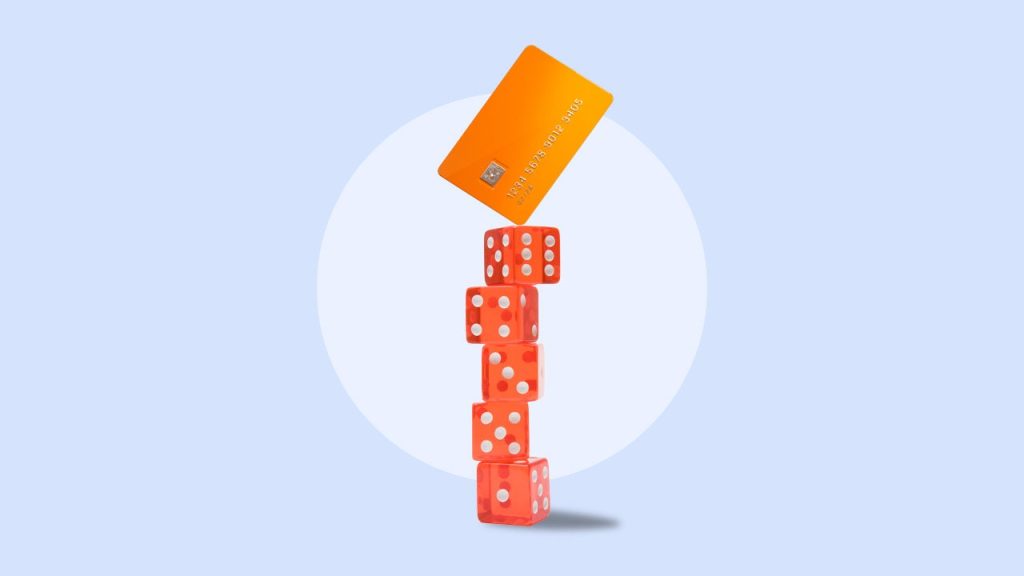We all spend money on things we know we probably shouldn’t. It could be fantasy football for some people and expensive craft beer for others.
As with any spending, the key is how you balance it against the other needs and wants that compete for your dollars. In addition to discretionary purchases like travel and entertainment, we recently asked 2,115 U.S. adults about their spending on common vices. And it’s more prevalent than you might realize.
The new Bankrate survey shows that more than 4 in 5 Americans (84 percent) spend money on alcohol, lottery tickets, casino games, tobacco, sports betting or marijuana.
But with nearly 1 in 3 Americans (32 percent) spending on substances or gambling at least once a week and about 1 in 10 (11 percent) taking on debt to pay for it, it’s worth considering when these so-called vices become risky, financially or otherwise.
By all means, set aside some fun money, but make sure you’re also checking off other priorities such as saving for a rainy day and paying down high-cost debt.
— Ted Rossman, Bankrate Senior Industry Analyst
Bankrate’s key insights on common vices
- Most Americans spend money on at least one substance or gambling method. That’s 84 percent who spend on alcohol, lottery tickets, casino games, tobacco/cigarettes/e-cigarettes, sports betting or marijuana/recreational cannabis.
- High-income households are more likely to drink or gamble. Low-income households are more likely to prefer tobacco or marijuana products.
- Cash is the most popular payment method for these vices. However, 11 percent of users are going into debt to pay for them.
How Americans are spending on vices
There are plenty of discretionary purchases out there — that is, things we spend money on that aren’t essential but might add pleasure, comfort or ease to our lives. Food, self-care products, luxury items, gambling and substances are just a few of many.
Dr. Sylvie Stacy, MD, MPH specializes in addiction and preventative medicine. She points out that brain chemistry helps explain some of our spending behaviors, in particular those involving substances and gambling.
“Substances and gambling activate what’s known as the brain’s reward system,” Stacy explains. “They release dopamine, which causes a sense of pleasure and relief.”
It tends to feel especially nice when we’re feeling stressed out, anxious or down in the dumps.
— Dr. Sylvie Stacy, MD, MPH
Bankrate’s survey reports that roughly 2 in 3 Americans buy alcohol (66 percent) and lottery tickets (64 percent).
They’re followed by 2 in 5 who spend money on casino games (40 percent) and around 3 in 10 who spend money on tobacco, cigarettes or e-cigarettes (30 percent); sports betting (29 percent); or marijuana or recreational cannabis (28 percent).
Half of Americans (50 percent) typically spend on at least one of these vices at least once a month. Nearly 1 in 3 (32 percent) do so once a week.
Gen Xers are most likely to spend in one of these categories overall, but specific expenses vary by generation.
Gen Xers (ages 45-60) are the most likely to buy lottery tickets (72 percent); Gen Zers (ages 18-28) are the most likely to spend money on sports betting (49 percent); and millennials (ages 29-44) are the most likely to buy tobacco, cigarettes or e-cigarettes (43 percent) and marijuana or recreational cannabis (35 percent).
High earners more likely to gamble, low earners prefer tobacco and marijuana
People with more money in their pockets — the highest-income households — are more likely than the lowest-income households to spend on gambling and alcohol. Gambling includes lottery tickets, sports betting and casino games.
Lower-income households are more likely to spend on tobacco, cigarettes or e-cigarettes and marijuana or recreational cannabis.
Cash is king when paying for substances and gambling
Cash is the most popular payment method for five of the six categories. Alcohol is the exception, for which 44 percent of users pay with a debit card and 42 percent with cash.
Meanwhile, 76 percent use cash for their lottery ticket purchases, 62 percent for marijuana, 61 percent for casino games, 51 percent for tobacco and 41 percent for sports betting.
Sports betters, at 22 percent, are the most likely to say they’ll spend more in 2025 than in 2024. They’re followed by 21 percent of marijuana or recreational cannabis users and 20 percent of tobacco, cigarette or e-cigarette users who expect to spend more on these purchases this year.
3 red flags for when your vices might be a financial problem
Overspending in any category, from gambling and substances to food, self-care or shopping, can hurt your finances. Here are a few signs that your pleasure or comfort purchases may not fit into your budget.
Red flag: You’re taking on debt
Not all Americans are paying with money they already have for these splurges. Around half of Americans are carrying credit card debt, according to Bankrate’s 2024 Credit Card Debt Survey. Today’s prices are high, and interest rates have made debt harder to overcome.
About 1 in 10 Americans (11 percent) spending in at least one of these categories are going into debt to pay for it. That includes those paying with a credit card paid over time, using a buy now, pay later service or borrowing from family or friends.
Among users, here’s how many take on debt as a result:
- Sports betting: 10 percent
- Alcohol: 8 percent
- Marijuana or recreational cannabis: 7 percent
- Tobacco, cigarettes or e-cigarettes: 7 percent
- Casino games: 6 percent
- Lottery tickets: 4 percent
Stacy says financial problems are often the first thing people mention when they visit her for addiction treatment. Patients will tell her, “I can’t afford to do this anymore.”
“If someone says, ‘My drug use is draining my bank account,’ or ‘I lost my job and so I can no longer pay my bills,’ those are… positive criteria when I’m diagnosing someone with an addiction,” she explains.
Red flag: You’re not able to save money
The Bureau of Labor Statistics reports the average U.S. household spent $637 on alcoholic beverages and $370 on tobacco products or smoking supplies in 2023.
“I certainly don’t want to shame people for their spending habits,” says Ted Rossman, Bankrate senior industry analyst. “But it’s worth noting that fewer than half of Americans can afford to pay for a $1,000 emergency expense from their savings* and about half of credit cardholders (48 percent) carry debt from month to month** at an average interest rate north of 20 percent.
“It’s fine to have some fun and engage in the occasional splurge, but it’s important to do so within the constructs of a solid budget,” Rossman continues.
Red flag: You’re stuck in a cycle
Stacy, who’s also a medical officer at Rehab.com, explains that certain factors can drive someone to use a substance or gamble, even if they can’t afford it.
“Negative emotions can be worse in people who have mental health conditions or during periods of financial strain, which can be a major factor that leads them to use substances or to gamble,” Stacy says. “But the dopamine release is short-lived.”
Stacy also recommends seeing a medical professional who can share options with you and direct you toward next steps.
[Short-lived dopamine] can lead to using more of the substance or doing more gambling. It can become a vicious cycle or — worse — a true addiction.
— Dr. Sylvie Stacy, MD, MPH
How to budget for recreational costs
Splurging on recreational activities doesn’t have to be all or nothing. Making a monthly budget helps you prioritize spending to fit your lifestyle.
Add up your necessary expenses
You probably know how much money you earn, but do you know exactly how much you spend on necessary expenses like rent or a mortgage, utilities and insurance? Now’s a good time to use a budgeting tool or app to start adding up expenses, starting with the ones you can’t live without.
Once you’ve subtracted that total from your income, look at what’s left and how you’ll use it.
Set aside money for savings and debt repayment
There are two things that should receive at least some of your discretionary income — emergency savings and debt repayment.
Based on the 50/30/20 budgeting rule, experts recommend saving at least 20 percent of your income. A good place to start is with an emergency fund, which holds three to six months’ worth of expenses in case of an unexpected cost or loss of income. You can open a high-yield savings account and create an automatic monthly transfer to fund it. Consider the money untouchable — it’s only for emergencies.
And if you’re carrying credit card debt or another form of high-interest debt, you’ll want to start paying it off as soon as possible to avoid the interest monster. Pick a repayment method, consider a tool like a balance transfer card and prioritize your monthly repayment before looking at fun expenses.
Consider switching to cash
After you’ve subtracted your necessary expenses, savings addition and debt repayment from your income for the month, there might be money left over. At this point, you could turn that money into cash to spend.
The cash stuffing method involves putting cash in envelopes for certain budget categories. If substances, gambling or other recreational activities are part of your monthly lifestyle, you could opt to pay for those things only with cash to help limit overspending. And just as importantly, it prevents adding to your credit card debt and thus accruing more interest charges.
-
Bankrate commissioned YouGov Plc to conduct the survey. All figures, unless otherwise stated, are from YouGov Plc. Total sample size was 2,115 adults. Fieldwork was undertaken between Dec. 16-18, 2024. The survey was carried out online. The figures have been weighted and are representative of all U.S. adults (aged 18+).
*This study was conducted by SSRS on its Opinion Panel Omnibus platform. The SSRS Opinion Panel Omnibus is a national, twice-per-month, probability-based survey. Data collection was conducted from Dec. 6-9, 2024, among a sample of 1,039 respondents. The survey was conducted via web (n=1,009) and telephone (n=30) and administered in English (n=1,013) and Spanish (n=26). The margin of error for total respondents is +/-3.9 percentage points at the 95% confidence level. All SSRS Opinion Panel Omnibus data are weighted to represent the target population of U.S. adults ages 18 or older.
**This survey has been conducted using an online interview administered to members of the YouGov Plc panel of individuals who have agreed to take part in surveys. All figures, unless otherwise stated, are from YouGov Plc. The total sample size was 2,518 U.S. adults, of whom 918 carry a balance on their credit card(s). Fieldwork was undertaken between Nov. 13-15, 2024. The survey was carried out online and meets rigorous quality standards. It gathered a non-probability-based sample and employed demographic quotas and weights to better align the survey sample with the broader U.S. population.
Read the full article here


